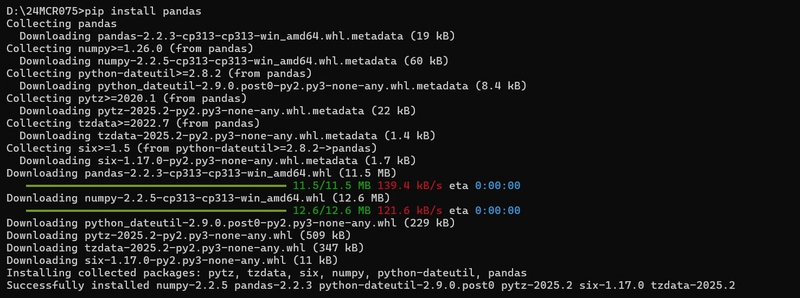How to Create a Fibonacci Sequence in JavaScript?
Creating a Fibonacci sequence in JavaScript is a fascinating way to explore the world of programming and mathematics. The Fibonacci sequence is defined by the relation where each number is the sum of the two preceding numbers, starting from 0 and 1. In this article, we'll explore how to implement this sequence in JavaScript using a while loop, similar to the summation approach that you shared. Let's delve into writing an efficient script for generating Fibonacci numbers. Understanding the Fibonacci Sequence The Fibonacci sequence starts with 0 and 1, and every subsequent number is derived from the sum of the two previous numbers. A brief look at the series reveals: 0, 1, 1, 2, 3, 5, 8, 13, 21, ... This characteristic property makes it a popularly studied sequence in both mathematics and programming. Your Current Implementation Using While Loop You mentioned a current implementation using a while loop to generate Fibonacci numbers. Here's your original code: var x = 0; var y = 1; var result = 0; while (result < 100) { result = x + y; x = y; y = result; document.write("This is the next number " + result + ""); } console.log(result); This code correctly calculates Fibonacci numbers less than 100. However, it has a slight issue: the initial values of result (which is set to 0 initially) will output the first number (0) every time it loops since the condition is result < 100, leading to possible misuse of document.write. Instead, you can modify it to enhance clarity and efficiency. Revised Code for Fibonacci Sequence Here’s a refined version of your Fibonacci sequence implementation, ensuring it operates properly: let x = 0; let y = 1; let result = 0; document.write("Fibonacci Sequence:"); while (result < 100) { result = x + y; if (result < 100) { // Ensure we only display numbers < 100 document.write("This is the next number: " + result + ""); } x = y; y = result; } In this code, we include a conditional check that makes sure we only output Fibonacci numbers that are less than 100. Implementing Fibonacci with a Modified While Loop Regarding your query about using a structure similar to the second loop you've shown: var total = 0, count = 1; while(count

Creating a Fibonacci sequence in JavaScript is a fascinating way to explore the world of programming and mathematics. The Fibonacci sequence is defined by the relation where each number is the sum of the two preceding numbers, starting from 0 and 1. In this article, we'll explore how to implement this sequence in JavaScript using a while loop, similar to the summation approach that you shared. Let's delve into writing an efficient script for generating Fibonacci numbers.
Understanding the Fibonacci Sequence
The Fibonacci sequence starts with 0 and 1, and every subsequent number is derived from the sum of the two previous numbers. A brief look at the series reveals:
- 0, 1, 1, 2, 3, 5, 8, 13, 21, ... This characteristic property makes it a popularly studied sequence in both mathematics and programming.
Your Current Implementation Using While Loop
You mentioned a current implementation using a while loop to generate Fibonacci numbers. Here's your original code:
var x = 0;
var y = 1;
var result = 0;
while (result < 100) {
result = x + y;
x = y;
y = result;
document.write("This is the next number " + result + "
");
}
console.log(result);
This code correctly calculates Fibonacci numbers less than 100. However, it has a slight issue: the initial values of result (which is set to 0 initially) will output the first number (0) every time it loops since the condition is result < 100, leading to possible misuse of document.write. Instead, you can modify it to enhance clarity and efficiency.
Revised Code for Fibonacci Sequence
Here’s a refined version of your Fibonacci sequence implementation, ensuring it operates properly:
let x = 0;
let y = 1;
let result = 0;
document.write("Fibonacci Sequence:
");
while (result < 100) {
result = x + y;
if (result < 100) { // Ensure we only display numbers < 100
document.write("This is the next number: " + result + "
");
}
x = y;
y = result;
}
In this code, we include a conditional check that makes sure we only output Fibonacci numbers that are less than 100.
Implementing Fibonacci with a Modified While Loop
Regarding your query about using a structure similar to the second loop you've shown:
var total = 0, count = 1;
while(count <= 10) {
total += count;
count += 1;
}
console.log(total);
To adapt your Fibonacci sequence into a similar while loop format, we can re-visualize how to structure it. Here’s an example:
let total = 0;
let x = 0;
let y = 1;
let count = 0;
while (count < 10) { // Limit to the first 10 Fibonacci numbers
total = x + y;
document.write("Fibonacci number " + (count + 1) + ": " + total + "
");
x = y;
y = total;
count++; // Increment the counter
}
console.log(total);
This structure modifies the logic while maintaining the essence of Fibonacci number generation. You can display the Fibonacci sequence and control iterations using a count variable, similar to how you summate.
Conclusion
Both approaches to generating the Fibonacci sequence in JavaScript are valid. The structure of your while loop provides flexibility for various implementations, whether it's for generating Fibonacci numbers or summing integers. Understanding such loops gives you a strong foundation for programming logic, and embracing versatility in coding helps cultivate great coding practices.
Frequently Asked Questions
What is the Fibonacci sequence used for?
The Fibonacci sequence appears in various aspects of computer science, nature, and art, often associated with the concept of growth patterns.
Why is the Fibonacci sequence important?
The Fibonacci sequence helps in algorithm design, mathematical modeling, and understanding recursive patterns, serving as a basis for dynamic programming and other computing techniques.
Can I use recursion for Fibonacci?
Yes, recursion is a common method to implement Fibonacci, but for large numbers, it may be inefficient due to overlapping calculations. An iterative approach is often preferred for performance reasons.







































































